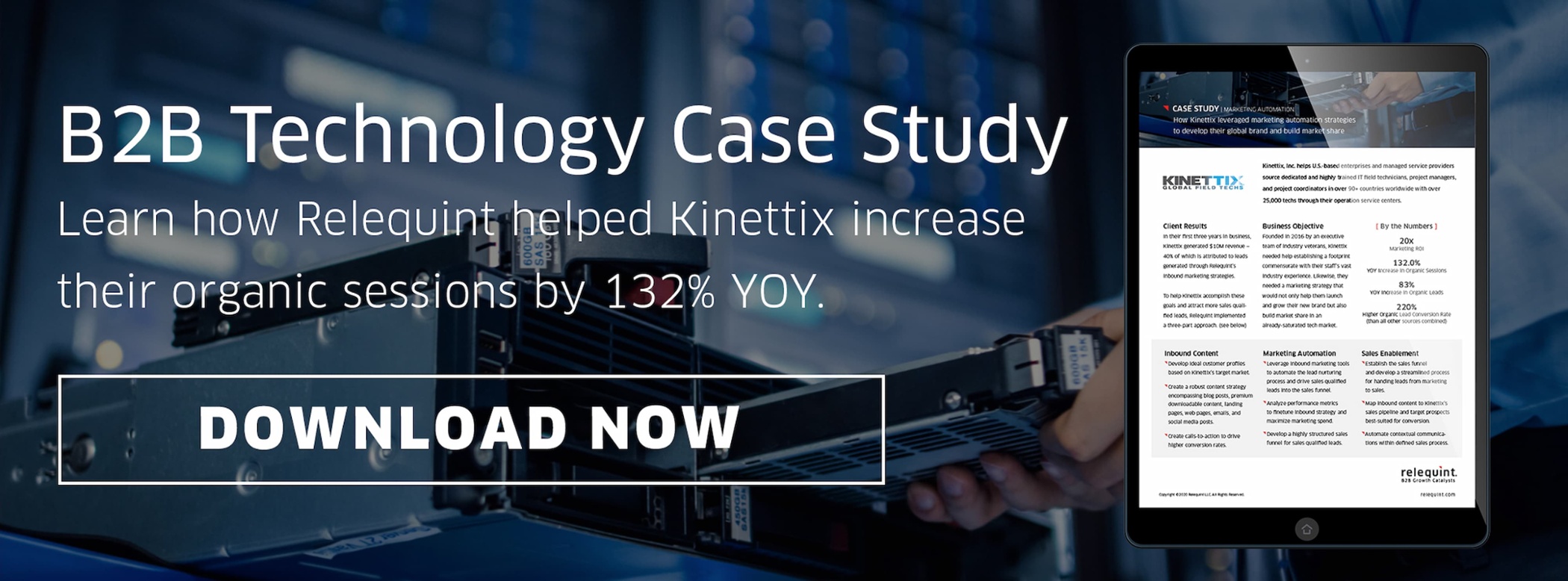 Marketing automation not only makes your sales and marketing teams more agile, but it can also help your B2B technology company secure more sales qualified leads. To make the most of this tool, however, you must first develop workflows that drive your daily marketing tasks.
Marketing automation not only makes your sales and marketing teams more agile, but it can also help your B2B technology company secure more sales qualified leads. To make the most of this tool, however, you must first develop workflows that drive your daily marketing tasks.
The exact structure of a workflow may differ between companies based on their unique sales process, internal organization, and more. However, the overall goal should be the same: to improve the quality of your assets, harmonize sales and marketing efforts, and maximize ROI.
Each workflow will lay out the series of steps your team needs to follow to complete their day-to-day marketing tasks and streamline the process. Below are some workflow examples that can make your marketing process more efficient and effective.
Content Creation Workflows
Content creation is one of the faster-growing ways to market to prospective leads. Unfortunately, the process can be time-consuming if you haven’t established proper workflows.
The first step to developing content for your website and social media channels are coming up with your B2B tech company’s buyer persona. Before you can find content that will speak to your prospects and convert them into sales qualified leads, you will need to fully define who your target audience is. It is ok to have multiple buyer personas to represent clients in different industries or ladders on the company rung.
Once you have clearly defined your target, you will need to come up with content ideas that can help push these personas through the sales funnel. Find out what their pain points are and how your products and services can address their needs, helping their business move forward and operate more efficiently.
Keeping detailed information about current customer and prospect calls and inquiries in your CRM system can also help you identify common issues that your content could address. Your content ideas should include thoughts on the overarching marketing campaign as well as a breakdown of each blog topic and the social media messaging that will accompany it. By the end, you should have a schedule for idea drops across your content mediums.
After launching, you will want to make sure to track your results to see which types of content and posts are drawing the necessary engagement and which ones fall short. These metrics will help you to determine which content could be expanded on and which one should be strategized.
By tailoring your content more specifically to your target audience and their unique set of needs, you will attract leads that can be helped by your products and services, making them more likely to engage with your offerings.
Lead Scoring Workflows
Lead scoring can help you categorize your leads more efficiently so you can tailor your marketing based on the lead's willingness to convert at a specific point in time. Through proper scoring, you can help provide your sales representatives with those warm sales qualified leads who are ready to take the next step towards a purchase so that the representative can close the deal. It also helps you know which leads are not at the right point for a sales call and can benefit from additional marketing.
The first task in a lead scoring workflow is to identify your leads. Be sure to capture your leads from multiple sources to ensure the scoring model is truly optimized. Customer relationship management (CRM) programs are the ideal starting point for this task. However, obtaining the leads is only the first step in the battle. You must also understand your leads’ behavior to be able to properly market to them. Find out what they want from your business and try to see things from their perspective. You also will want to determine when or how they may want to receive the information they are looking for.
To organize all of this information better, come up with a system that attributes values to different prospect behaviors. For example, you can create a lead scoring system that assigns points for things like form submissions, demographic information, or email engagement. Depending on the number of points a prospect accumulated, they can be classified as cold, interested, intrigued, or warm leads. You can use automated workflows to drive the lead scoring process.
Once you have organized and scored your leads, it is time to nurture them.
Lead Nurturing Workflows
A lead nurturing workflow may be most successful if it follows a lead scoring process. By knowing whether your leads are cold, interested, intrigued, or warm, you will have a better understanding of where they are in their decision-making process and can use this information to target your marketing efforts to each group in a more effective manner.
A truly efficient lead nurturing workflow will take advantage of marketing automation software, which can allow you to schedule and automate marketing messages based on which lead score your prospect was given. These programs can significantly cut down the delivery time of marketing communications and free up time for the marketing staff to focus on other efforts of the campaign.
When starting a lead nurturing workflow, you will need to organize your B2B tech company’s content based on how well it speaks to the needs of each lead status. You may want to consider producing email and newsletter copy that is tailored specifically to each kind of lead.
Once you’ve launched your automated lead nurturing workflows, you can monitor metrics such as click-through and open rate to determine which types of content were successful with certain leads and if the lead is advancing further through the sales funnel. Once they have become qualified leads, it is time for your sales department to initiate one-on-one contact.
Architecting robust, automated workflows can generate more sales qualified leads while also freeing up your sales and marketing teams to focus on maximizing their resources to drive revenue.
Download our B2B technology case study to see how marketing automation helped one of our clients generate 10M in revenue in their first three years of business — 40% of which came from inbound strategies. ![]()







 By
By 
